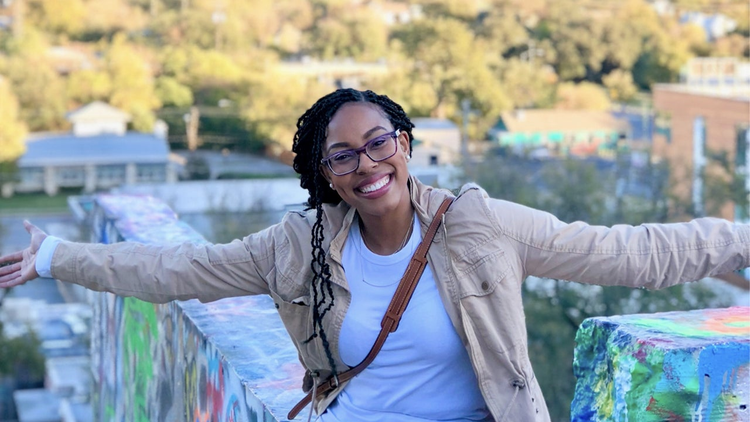Create the miracle that changes someone’s life

In recognition of Black History Month, Adobe employee Markeia Brox-Chester shares the story of how she found success in the tech world and the importance of creating opportunity for students and young professionals of color.
Markeia Brox-Chester believes that she’s achieved as much as she has in life because of “a few miracles”: Growing up in Oakland, she attended a private, all-Black elementary school with teachers who taught her to reach beyond the stereotypes placed on her by the outside world. Her family supported her and sacrificed so she could attend the best college prep high school in the area. After being accepted to the University of San Diego and facing student debt totaling over $100,000, she asked for more financial aid and, surprisingly, the school doubled her scholarship.
More importantly, however, Markeia believes that everyone has the power to create those miracles. In the story she shared during Adobe for All Week, Adobe’s annual internal D&I event, Markeia challenged everyone to make opportunities for people with backgrounds like her. She advocated for employees to look beyond the obvious and instead consider the value each person brings to the organization.
We talked with Markeia about her experience of sharing her story and how she wants to pay the miracles forward.
Why did you feel it was important to share your story broadly with employees?
I think it’s less about my story than about the untold story of people like me, who may never even have a chance to reach an audience. I recognize the privilege I have that lets me bring attention to my own experiences, and I didn’t want to take that for granted.
What was it like to share those experiences with such a large audience?
It made me think about how I got here, and it was a reminder that I’m not too far separated from that girl in my story. Growing up, I was constantly having to prove myself and worry what people think of me because I was often the only one in the room who looked like me. That has ultimately translated into the working world. I sometimes step into a meeting and worry, “What will they think? How am I coming across?”
There are still not that many young women of color in tech — not as many people of color overall, really. When I look around, I think sometimes, “Here I am again.” The difference is that I have more confidence now. I’m still anxious in those situations, but I know that I’m capable and that I’m successful, and I want others like me to have that same opportunity.
You talked in your story about creating opportunities. Why is that important?
Historically for the Black community, no matter how hard you work, no matter if you do all the right things, many times you just won’t have the same opportunities. I think about my parents and my grandparents, who have all worked really hard all their lives, yet they still weren’t able to save for the future. It’s because we have these gaps in building generational wealth and opportunity. So now, we’re in this constant game of catch up, hoping to one day break the cycle.
And to break that cycle, we have to show Black children that the opportunities available for them go beyond what they see in the media today. Working for a big tech company, for example, can feel so out of reach when you don’t see yourself represented as often. But there are so many real, achievable ways people can find success. You can build a successful tech career as product manager or engineer, or work your way up to being the next CEO; it’s all possible.
How do we shift that perception?
It’s as simple as things like broadening the positive representation shown in advertisements, TV shows and movies. Let kids of color see someone who looks like them who’s a graphic designer or an artist or a scientist.
I think about Kamala Harris, who was just elected Vice President. She’s the first to hold this position who is Black, the first who is South Asian, and the first who is a woman. It’s so monumental because kids can look at her and say, “She looks like me. I can do that too.” Or I think about the iconic image of Barack Obama leaning over to let a young Black boy touch his hair. He wants to know, “Is his hair like mine? Is he like me?”
It’s when kids can see what’s possible for people like them, they’ll believe that they can do it, too.
What kind of response did you receive from people who listened to your story?
I heard from people who had similar experiences or who identified with my story, some who even went to the same school that I did. That drives home to me that people right next to you might be experiencing something completely different than you and you have no idea — which is part of why sharing our stories is so important!
What would you like people to take away from your story?
To anyone who is in the same position I was, I would say to take opportunities as they come and don’t be afraid to ask questions and believe in yourself. For everyone else, create those opportunities wherever you can. Pay it forward. You’ll be doing so much for so many that you don’t even know yet — and you never know; you might change someone’s life.